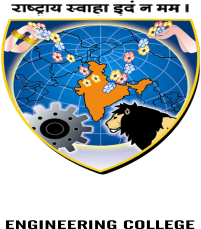Sentiment Extraction Model
Team Members: Rohan Dodiya
Guided by: Prof. Dipesh Joshi (dipesh.joshi.ce@vvpedulink.ac.in)
The sentiment analysis system is designed to classify the sentiment of text inputs as positive, negative, or neutral. The system is based on a random forest algorithm work on Python, Flask, Data science, Machine learning and is integrated with the Flask framework to make it accessible via API. The system has three divisions: text analysis, file analysis, and reviews analysis. The system also has an option to refresh the model, which re-trains the model with updated data.
AI Based Keyword and Content Generator Tool
Team Members: Hardi Govani
Guided by: Prof. Brinda Chanv (Brinda.chanv.ce@vvpedulink.ac.in)
AI Based Keyword and Content Generator Tool is a trending content aggregator where user can generate content to get more reach and to expand their network in multiple social media platforms. The platform we work on .NET, React, Next.js. The main objective of this website is to provide a user-friendly experience to customer from whom they can create their desired trending content and keywords.
Vulnerability Assessment & Penetration Testing (VAPT)
Team Members: Abhik Makwana
Guided by: Prof. Rahul V. Vora (Rahul.vora.ce@vvpedulink.ac.in)
The main objective is to discover potential security weaknesses and
Vulnerabilities that could be exploited by attackers. This involves conducting thorough assessments and scans of systems, networks, and applications to uncover vulnerabilities in configurations, code, or design.
VAPT aims to assess the potential impact of identified vulnerabilities on the overall security of the systems. This includes determining the level of risk associated with each vulnerability and understanding how they could be exploited to gain unauthorized access, steal data, or disrupt services.
Object detection using machine learning
Team Members: Kotak Jaykishan
Guided by: Prof. Sagar Virani (sagar.virani.ce@vvpedulink.ac.in)
Object detection model work on concept machine learning and image detection algorithm and various libraries.
The project is work based on technology like Python / C++. Object detection is a computer vision technique that focuses on identifying and labeling objects within images, videos, and even live footage. It becomes as simple as feeding input visuals and receiving a fully marked-up output visual. Object detection has become embedded into our daily lives, covering security, automated vehicle systems, and more.
Automate detection of different emotions from paragraphs and predict overall emotion
Team Members: Krisha Davda
Guided by: Prof. Dipesh Joshi (dipesh.joshi.ce@vvpedulink.ac.in)
This Machine learning module can determine different emotion from text like person is feeling happy, sad , angry , etc. This is done by various Machine learning models like keras, Tensorflow, matplotlib and many more.
Emotion recognition is the process of identifying human emotion. Human beings have various emotions, which can now be recognized by machines and computers to advanced algorithms. The develop of such algorithms to recognition as being able to help a range of industries, from retail to healthcare, achieve their security and business objectives.
RIO-210 Automate Digitization and Review of a Hard Copy Question Paper
Team Members: Saisurya Vanniyar
Guided by: Prof. Sagar Virani (sagar.virani.ce@vvpedulink.ac.in)
The aim of project is to develop dynamic and responsive web application to aid teachers, professors and educational organization to create question paper and review it. The Technology is work like Tesseract OCR, MySQL, and Java Web Application. To develop responsive web Application is 1) Scanning handwritten images into word template.2) Allow users to copy handwritten text into corresponding web fields.3) Allow reviewer to review the final question paper. 4) Export Question Content in Excel format.
Forest Approximation
Team Members: Rawal Darshit, Rushi Nariya, Parth Nonghanvadra
Guided by: Prof. Dipesh Joshi (dipesh.joshi.ce@vvpedulink.ac.in)
The project entitled “Forest Approximation” has 3 core features to look into the issues in the current situation in the world. The project aims to draw the attention of society and the government forest departments to the impact of forest changes. The intention of locust tracking is to serve the needs of the campaign (i.e. affected countries, Desert Locust Organization, and FAO), to strengthen the future prediction. Forest fires are major environmental issues, predicting the burnt area of forest fires useful for improving firefighting resource management. Our project is based on the Python-based Machine Learning Model for prediction and analysis.
Covid-19 Face mask detection system
Team Members: Niti Modi , Jhanvi Kotak
Guided by: Dr. Kamal Sutaria (kamal.sutaria.ce@vvpedulink.ac.in)
Face Mask Detection Platform uses Artificial Network to recognize if a user is not wearing a mask. The website can be connected to any existing or new IP mask detection cameras to detect people without a mask. Users can also add faces and phone numbers to send them an alert in case they are not wearing a mask. If the camera captures an unrecognized face, a notification can be sent out to the administrator. If the face mask detector application identifies a user that he/she was not wearing a mask, AIalerts are sent with the picture of the person. It allows the application to run automatically and enforces the wearing of the mask
SALUTEM CARE
Team Members: Makwana Ravikumar , Talaviya Idit, Shah Rushabh
Guided by: Prof. Nivid Limbasiya (nivid.limbasiya.ce@vvpedulink.ac.in)
The Solution of this entire problem is a “Salutem Care” Healthcare Web. The main goal of application is to maintain the historical data of This historical data contains medical reports, communications with doctors, medicine details, etc. Once the patient creates an account. The app maintains every detail lifetime. These details are updated by doctors, pharmacies, and biologists based on transactions. The motive of this application is to paperless, smart, secure, time-saving transactions

